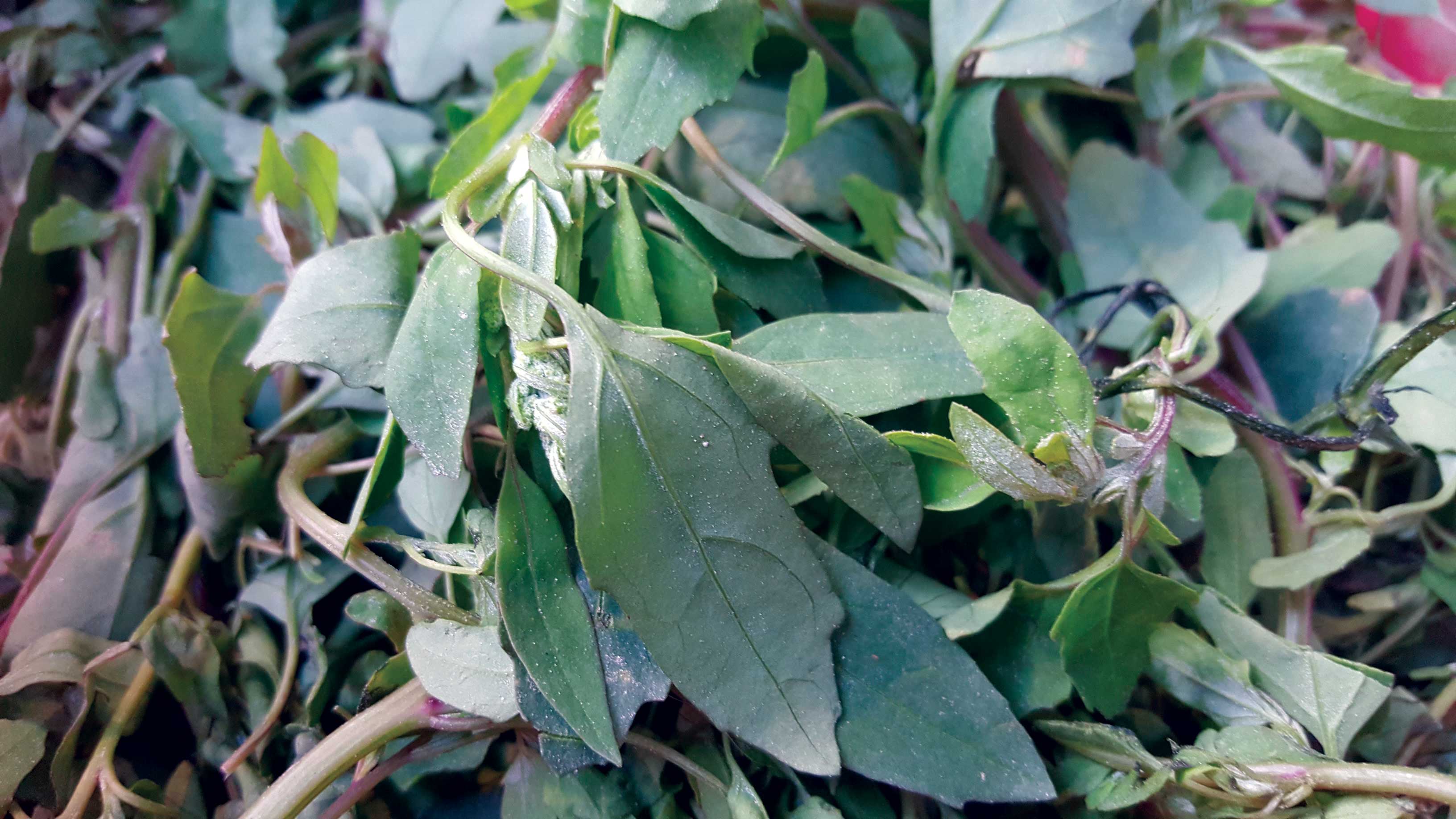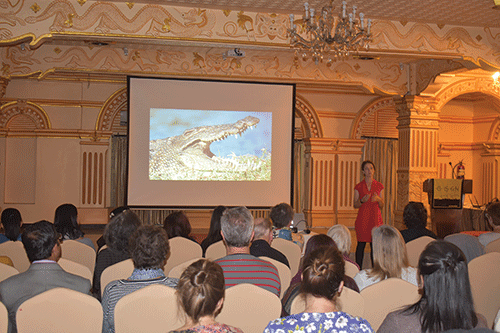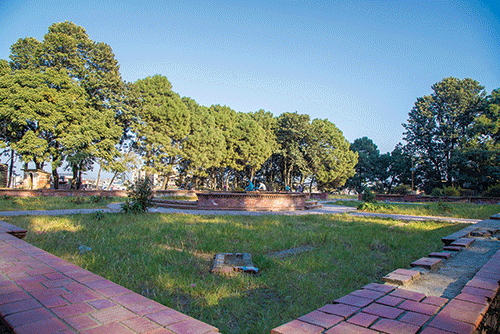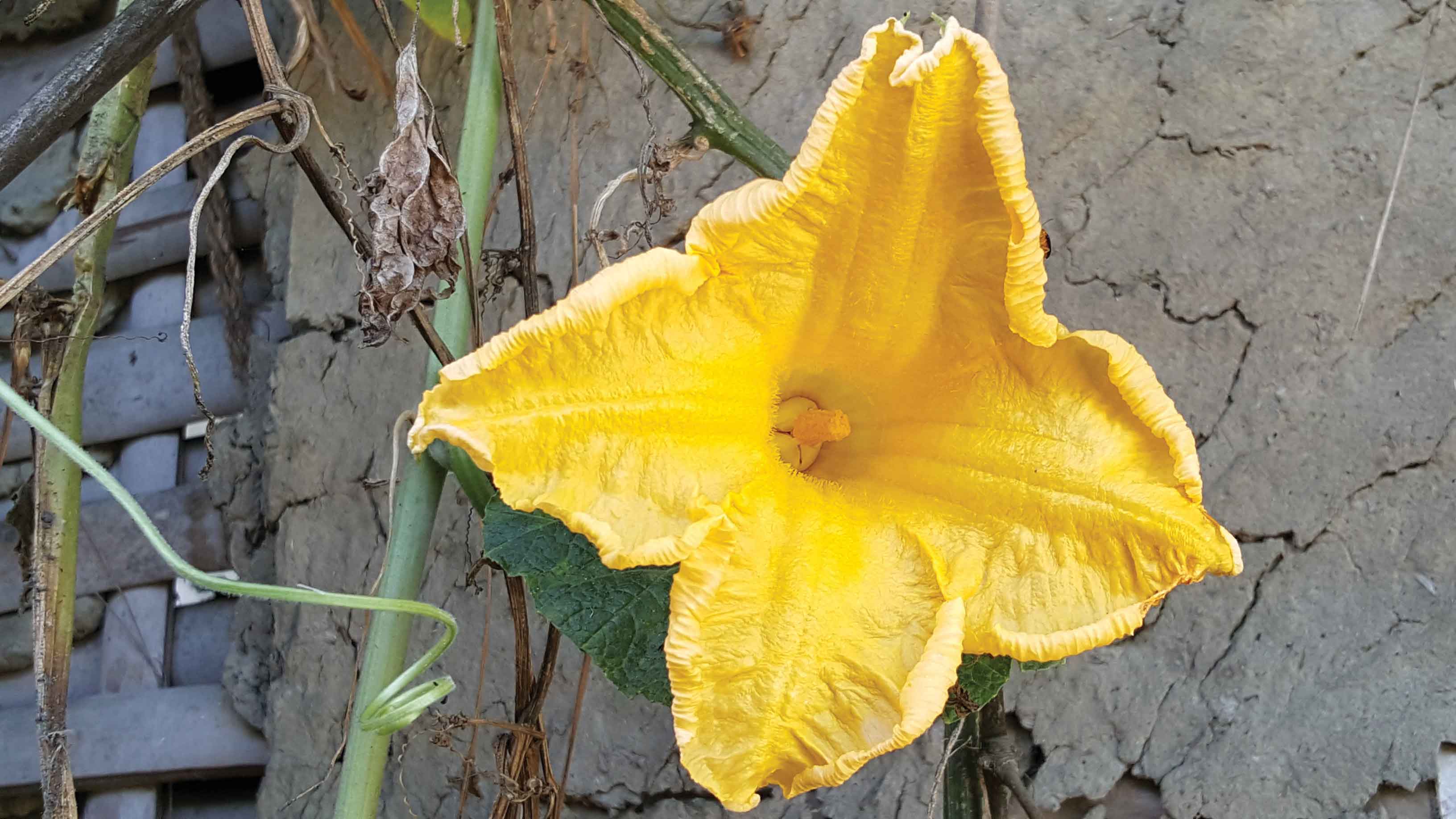It all began in Rome a long, long time ago. The Romans were so busy fighting wars all the time that for them, finding the perfect means to relax and rejuvenate their battle-weary bodies in double quick time had become somewhat of a national imperative. Their physicians were convinced that wellbeing could only be possible through Mens Sana in Corpore Sano (a healthy mind in a healthy body). To achieve this, they discovered that a combination of bathing, diet, exercise and massage in equal measure was needed.
Argh!” I cried out involuntarily. And then, “Ahh! That’s it.”
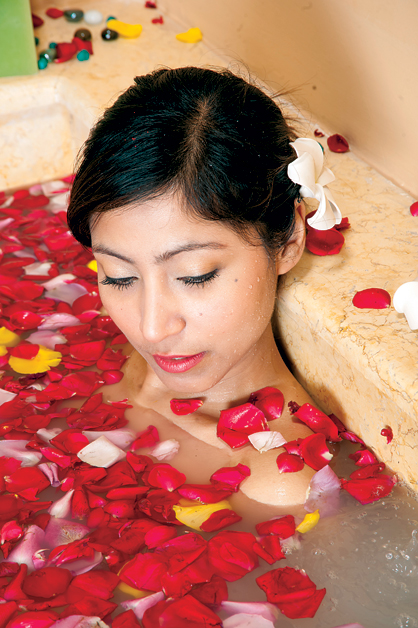 The burly, dark-skinned masseur was encouraged. He started to work on my thighs next. His big calloused hands kneaded my leg muscles like they were dough. After half an hour of such robust massage, my whole body felt like it had been given new birth. The big guy stood up and put out his hand into which I placed a half rupee coin. He was delighted. “Call me again any time you need me,” he said.
The burly, dark-skinned masseur was encouraged. He started to work on my thighs next. His big calloused hands kneaded my leg muscles like they were dough. After half an hour of such robust massage, my whole body felt like it had been given new birth. The big guy stood up and put out his hand into which I placed a half rupee coin. He was delighted. “Call me again any time you need me,” he said.
Now, you might be wondering where in the world one can get a half-hour massage for half a rupee. Let me dispel your optimism before it gets out of hand. I was in a prison in Birgunj, had been inside for almost a month now. Why was I inside? Well, to cut a long story short, the journey of a young and wild life had inevitably led to the prison gates, very much like it happens in movies. To be honest with you, a round of fisticuffs gone out of hand―a common event in the ’80s in a rough border town like Birgunj―had led to me being incarcerated for a short while.
Eureka! It’s The Back, Stupid.
Of course there are a lot of terrific memories of my forced confinement, but the one that stands out most fondly, are memories of my daily half-hour massages during my two months’ government-sponsored holiday. This was when I discovered that the back muscles throughout the body, including the legs, are the ones that we give least attention to in our daily lives. As a biology student, I was also well aware that some of the largest muscles were all at the back, especially the backside of the legs. This was when I discovered that if one were to have them massaged regularly, one could really become whole in the true sense of the word. And, because one cannot do that to oneself, lo and behold―enters the masseur! And lo and behold, enters the world of massage parlors. And lo and behold, enters a mighty big part of the world of health centers and spas!
This experience made me understand why Jim Kelly in ‘Enter the Dragon’ seemed to be in such a blissful state when a chinky bombshell was stepping all over his back as he lay in bed. I also learnt a trick from him. As the beautiful masseur trod on his gluteal muscles (the buttocks, to be more precise, and take it from me, the feeling is one of heaven when someone does that!) cunning Jim rolls over, making the girl fall down on to his eager arms. What follows, I leave to your imagination. Have I performed this trick myself? Yes, a couple of times. Have the results been as I had hoped for? Yes, yes and yes!
Now don’t get me wrong―one cannot get as lucky all the time, so don’t you start going to massage parlors, health centers and spas hoping to get more than what you pay for. But, of course, I am being naïve. Everyone knows that most massage parlors around town are only that in name. In reality, they are ill concealed fronts for brothels. So where does a decent guy go for a decent massage? Spas would be the unequivocal answer. Now you might ask me, what are spas really? Are they just for massages?
Mens Sana in Corpore Sano
Spas, or more correctly, health spas, are much more than just that. The word “spa” is a Latin acronym for ‘sanus per aquam’, or ‘health through water’. It all began in Rome a long, long time ago. The Romans were so busy fighting wars all the time that for them, finding the perfect means to relax and rejuvenate their battle-weary bodies in double quick time had become somewhat of a national imperative. Their physicians were convinced that wellbeing could only be possible through Mens Sana in Corpore Sano (a healthy mind in a healthy body). To achieve this, they discovered that a combination of bathing, diet, exercise and massage in equal measure was needed.
So, they created baths. Not ordinary baths mind you; the Roman baths were something else! Said to have originated in the 2nd century B.C., by the 5th Century A.D., there were more than 900 in Rome alone. And some were huge! The Caracalla bathhouse (Terme di Caracalla) could hold 1600 bathers and occupied 32 acres, while Emperor Diocletian’s baths are known to have held up to 3000 people. Huge slave-stoked furnaces heated enormous tanks of water, which was transported by clay pipes to the baths. There were also some Roman bath houses that were built on the site of natural hot springs (which were particularly known for their curative powers).
The usual routine for a spa visitor was as follows: first came exercise in a large central courtyard or in an indoor gym (palaestra), where the tough guys worked up a sweat wrestling and boxing each other. Next, they entered a warm room (tepidarium), where the sweat and dirt was rubbed off with an invigorating massage. Various kinds of oils were used. Then, they stepped into an outdoor heated pool followed by a stint in the steam room and, finally, the cold room (frigidarium), which had a small plunge pool. All in all, it must have been a most pleasant experience. And, if the success of Roman conquests is anything to go by, it must surely have also been an invigorating one!
The Name is Misleading
It is clear that the word “spa” should not be taken literally to understand what it stands for―it is not all about water although Jacuzzis (baths with swirling water), hot tubs and various baths are an integral part of any decent spa parlor. Walk into the Midas Spa Day Salon near Yak & Yeti Hotel and one of the striking things you’ll notice is the three-sided Jacuzzi with its paraphernalia of water taps on one corner of the circular salon. However, it is but one of the many different aspects of spa treatment. In fact, one could say that the highlight of this particular parlor is not this, but rather the exotic looking mahogany colored bed-like structure in a side room on which clients lie down to enjoy a custom made massage.
Actually, all said and done, you could say that the massage is really the primary part of any spa treatment. How relaxing is it? My own personal experience as detailed at the beginning should answer this question. And, if you now take into account the fact that various kinds of herbal oils (aromatic and non-aromatic) are used in spa parlors for massage, then it is not difficult to realize that the massage is easily the highlight of any spa experience. According to Sadhana Tuladhar, Spa Manager of Spa Prana in Annapurna Arcade, a stone’s throw away from Midas, “We use around 30 different herbs and oils. We use them as per the specific needs of clients.” Obviously, masseurs have to have a good degree of knowledge about herbs, aromas and such things and which one is suited for what type of skin. Because let’s face it, kneading and cajoling muscles to relax is one thing, the outward appearance is as important. This is where ‘body polishing’ comes in.
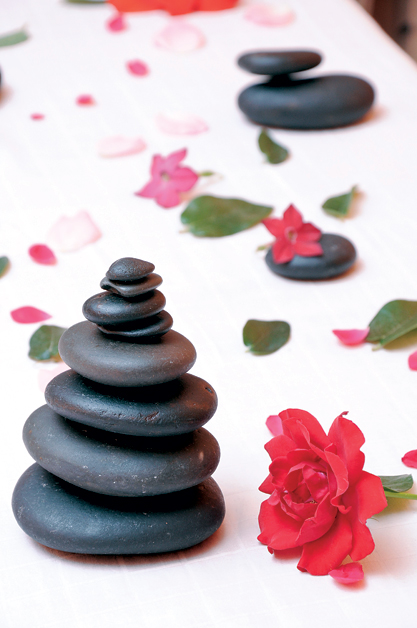 The Royal Treatment
The Royal Treatment
And this is where it all begins in modern day spas―‘body polishing’ or, in other words, ‘body scrubbing’. And, this is where today’s spas fail to score over ancient Roman spas. As anybody knows, the whole spa experience would be much better appreciated after one has worked up an honest bit of sweat as the Romans did by wrestling and boxing beforehand. Of course, this is not to say that there are no spas here that do not have such amenities. Five-star hotel spas like Hyatt Regency’s Club Oasis, Gokarna Resort’s Harmony Spa and Pokhara’s Fulbari Spa Avatar (to name a few) do have facilities that allow clients to work up a decent amount of sweat through their tennis courts and gymnasiums before entering the spa itself. But, as far as city spas (mostly day spas) are concerned, this aspect is definitely lacking.
However, as you will see, this is compensated for in many different ways. For one thing, just entering the premises of a quality spa is enough to transport you into a whole different world, an exotic one. A world that is as far apart from the real one as Venus is from earth. Non-believers don’t have to go far to become believers; just take a stroll on Durbar Marg and walk into Midas or Spa Prana and you will know what I mean. Spa owners take a lot of pain and invest a lot of money in creating the right ambience because, without this, a spa cannot truly be an ‘experience’. Again, a stroll into some lesser known spa after a visit to places like Prana and Midas should convince most that the right environment is indeed very, very, important for any spa to justify its claim to being called a spa.
Now, how is the right ambience created? Is it only the soothing décor? Is it the dim lighting arrangements? Is it the uniquely designed furniture? Or is it only the high quality equipment used? It is a combination of all these, plus one other very important factor―the conduct of the people involved. Just as the spa treatment begins with a body scrub, the spa experience begins with the welcoming atmosphere as produced by the combination of soothing décor and the courteous behavior of the spa staff. Again, one doesn’t have to look far to comprehend this. Sadhana Tuladhar, in her immaculately designed fawn colored uniform, the way she stands up straight to greet guests with folded hands and bowed head (very much reminiscent of traditional Thai courteousness), is the perfect example of how people play the central role in generating the kind of atmosphere that is expected of a great spa. This, then, is really the beginning of the royal treatment that you get at a good spa. You feel welcome. You feel like royalty.
The Spa Experience
Spas provide various treatments to help heal the body and mind besides making you look better. Different spas have different treatment provisions. For example, some might be equipped with a sauna, steam bath or hot tub, while some may not. Similarly, while most spas have facilities for hairdressing, some might not. The hottest trend, and one which all spas here emulate, are indigenous treatments that highlight local ingredients and therapeutic traditions―in the local context, herbal/Ayurvedic treatments. Some international examples are Arizona spas’ Cactus Flower Wrap that uses prickly pear cactus extract as skin softeners, the Sedona Mud Wrap of some spas in the American southwest that uses local mud to detoxify the body and nourish the skin, and Maine’s Blueberry Body Wrap and Blueberry Smoothie Pedicure.
To get a good idea of what one can expect of a spa experience here, one can go by what a typical all-round package at the Spa Prana consists of: 1. Body Scrub (Body Polish), 2. Bath, 3. Body Wrap, 4. Massage, 5. Facial, and 6. Manicure and Pedicure.
Body Scrub (Body Polish): It can be referred to as a body facial that leaves your skin feeling smooth and soft. Body scrubs help in keeping the skin healthy through exfoliation (that is, the scrubbing away of skin with a gritty substance to remove the dead surface layer). Most body scrubs have three ingredients: an exfoliant (an abrasive material like salt, sugar, rice bran, coffee grounds, etc.); oil (expensive body scrubs use expensive oils like macadamia oil, kukui nut oil and sweet almond oil); and fragrance that emanates from high-quality essential oils like the spearmint and rosemary. The exfoliation is usually followed by a shower and an application of body lotion.
Body Wrap: A body wrap takes place after a scrub. It might mean being slathered with mud, algae, or seaweed and wrapped in a thermal blanket, in which case it is ‘detoxifying’ treatment that stimulates the metabolic system. If the product used is cream or lotion, then it is a ‘hydrating’ treatment. Various herbs, yogurt, honey, antioxidant and detoxifying oils and even coffee are also used for this treatment. The Caribbean island of Mustique has spas offering the Lime and Pineapple Extravaganza that uses fresh lime mixed with sea salt for a body scrub, followed by a pineapple, yogurt and honey wrap to soothe and soften the skin. A body wrap can also be useful in treating cellulite and, in addition, it sometimes has a diuretic effect, thus achieving temporary weight reduction.
Bath: “We have flora, aromatic, herbal and milk baths,” says Sadhana of Spa Prana. “The milk bath is the favorite.” We have to credit Cleopatra for this. Milk contains lactic acid which exfoliates the skin, making it baby soft. Two to three cups of regular milk are generally enough. Oats are sometimes used to soothe the skin and thicken the water. Further, one or two teaspoons of honey may be mixed in for fragrance and to add nutrients to the water. Aromatherapy baths can be muscle relaxing, aphrodisiacal, detoxifying or hydrating, depending on the essential oils used. For example, lavender, with its classic fragrance, is a perennial favorite that relaxes the muscles, while citric, rose, jasmine and ylang ylang (an aroma originating in China) are considered aphrodisiacs.
For the relaxing effect, a usual combination could be five drops each of lavender and lemon oil along with three drops of chamomile essential oil. An aphrodisiacal aroma-therapeutic mix could consist of five drops each of sandalwood, lavender and rose essential oils. Cleopatra took regular baths with milk and rose petals (combining both the relaxing and the aphrodisiacal in one). Some spices like ginger and cloves are also used in aphrodisiacal baths. Their main purpose is to raise body temperature. Some spas also have the tea bath in which case the combination could be of two tablespoons each of green tea, loose peppermint tea and chamomile tea with three tablespoons of oat flour, five drops of lavender essential oil and five drops of neroli essential oil. After this bath, Aloe Vera is applied on the body. It is said to be quite stress relieving.
Massage: Like mentioned before, a massage is the focal point of any spa experience lasting from anywhere between 30 to 90 minutes. Gliding, kneading and cross-fiber friction strokes using massage oils are used by therapists to work the muscles, improving circulation and releasing tension. Massages can be of many kinds such as Swedish massage, deep tissue massage, hot stone massage, sports massage, aromatherapy, lymphatic drainage, trigger point therapy, cranio-sacral therapy, neuromuscular therapy and myo-facial release. Other examples are Watsu, Rolfing, Reflexology, Shiatsu, Thai massage, and various Ayurvedic massages.
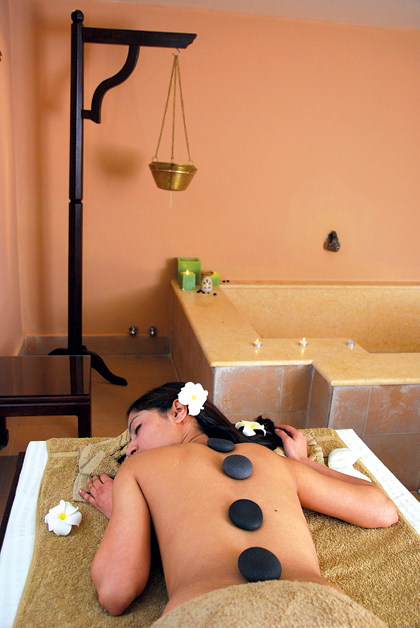 The Thais are well known for their expertise in massage techniques. They use herbs containing poultices that induce deep muscle relaxation. Heat is used to open up bodily pores to enable better absorption of the herbal extracts, thereby helping to eliminate toxins and relax the muscles. Some other interesting massages are the Lomi Lomi of Hawaii, an ancient technique involving fluid motions of the forearms, and some New York spas’ Mohonk Red massage that uses towels infused with a rare witch hazel. Here, most spas offer exotic Eastern massage, usually Ayurvedic. This is why one will find quite a few therapists (masseurs) from South India at the local spas.
The Thais are well known for their expertise in massage techniques. They use herbs containing poultices that induce deep muscle relaxation. Heat is used to open up bodily pores to enable better absorption of the herbal extracts, thereby helping to eliminate toxins and relax the muscles. Some other interesting massages are the Lomi Lomi of Hawaii, an ancient technique involving fluid motions of the forearms, and some New York spas’ Mohonk Red massage that uses towels infused with a rare witch hazel. Here, most spas offer exotic Eastern massage, usually Ayurvedic. This is why one will find quite a few therapists (masseurs) from South India at the local spas.
Facials, Manicures and Pedicures: All spas offer these amenities, which are actually the culmination of a holistic spa experience, the single goal of which is to make you feel good inside and out. Facials are quite elaborate affairs involving a variety of skin treatments such as steam, exfoliation, extraction, masks, peels and massage. Top-of-the-line equipment is used by skilled therapists to nourish facial skin and make it clear-complexioned and well hydrated besides, of course, getting rid of problems like acne (blackheads, whiteheads and pimples), unwanted hair, etc. A facial also includes a facial massage to relax and stimulate the skin and facial muscles. Toners and protective creams are used as per specific skin type. Facial masks contain minerals, vitamins and fruit extracts. They may be deep cleansing, for healing acne scars or hyper-pigmentation, or for enhancing skin tone. Other varieties include mini-facials (cleansing without extractions) and specialty facials like the ‘age defense’ facial (with Vitamin C), ‘oxygen facial’ (where a mist of pure oxygen is used) and ‘collagen facial’ (in which special collagen sheets are placed on the skin). A ‘photo facial’ is a light treatment to boost collagen or to treat acne problems.
A good manicure and pedicure is mostly dependent upon a good technician, the reason why spa owners go to great lengths to employ such people. Beautifully shaped nails, complemented by the perfect colors used in sync with your complexion, are the hallmarks of a good manicure and pedicure. A spa manicure and pedicure also includes special treatments like an aromatic salt rub, a hydrating mask or a paraffin dip. All these help to make the effects last longer and well.
In conclusion, it must be admitted that Cleopatra was right all along. The things she did, the things that formed part and parcel of her daily beauty routine, were what one can now experience at spa salons. She, of course, tried to keep it a secret, and she undoubtedly succeeded if we are to go by the lore associated with the everlasting mystery of her mythical and legendary beauty.
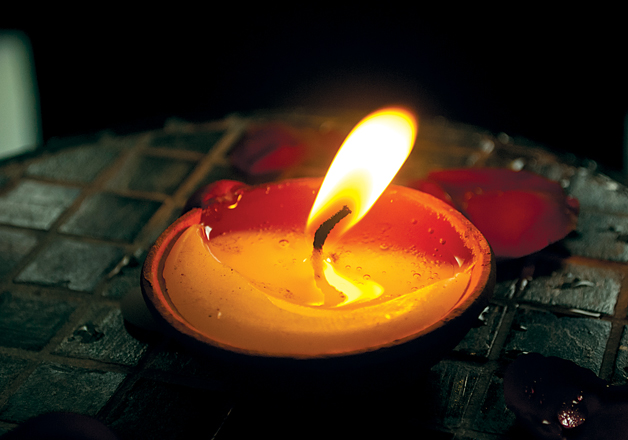
Our mothers and grandmothers, on the other hand, also knew about the benefits of spa-like treatments, including facials and, particularly, massages. Witness the way they have been providing massages to the new-born and to the post partum mothers. Witness how they have used pure mustard oil for its many therapeutic properties, and witness how they have been making good use of things like cucumber and turmeric to heal and improve skin tone and complexion. In addition, the herbs used in spa treatments are herbs that have been used for ages by people in many villages far and wide for the many benefits that they provide.
So, spa treatments are nothing really new, but, and this is the big but, modern day spas are where it all comes together under one roof. These centers for healing weary bodies and tired minds provide most of the therapeutic benefits as practiced not only by Cleopatra and our grandmothers, but treatments enhanced further by the skills of dedicated therapists who live by the motto, Mens Sana in Corpore Sano.


